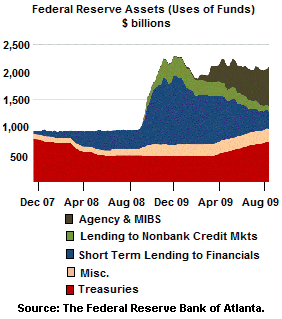The title “senior advisor” has been used and abused by a handful of annuity salespeople as a mask for marketing to the mallwalker set. But several quite honorable professional groups issue or intend to issue credentials that actually do signify expertise in retirement income planning.
One such group is the Retirement Income Industry Association, which plans to announce its Retirement Management Analyst designation at its third annual awards dinner at conference October 5 and 6 in Boston, along with a new book that serves as a manifesto and a roadmap to the designation.
“Manifesto” is an appropriate descriptor for the book, whose title is a mouthful: How To Benefit from ‘The View Across the Silos’: From Investment Management to Retirement Income and Retirement Management. The authors, RIIA president Francois Gadenne and risk management expert Michael Zwecher, hope that it will shake up the advisory world. (Full disclosure: I helped edit the book.)
The book’s main message is condensed into seven words: “First build a floor, then create upside.” It argues that an advisor’s primary duty in helping clients plan for retirement is to use their assets to establish a foundation of reliable or guaranteed income that meets their needs. The advisor can then use the rest of the assets to take risks.
Some advisors already practice “build a floor and create upside.” But Gadenne believes that the vast majority of financial advisors still operate from an “accumulation mindset.” This approach, and the modern portfolio theory that underlies it, fails to address the needs and risks of retirees.
Thus the reason for a book that provides something new. “There’s a vacuum in the market,” Gadenne told RIJ. “The other material that is out there is focused on the traditional approach to investment management, which is asset allocation. Asset allocation misses the point. What needs to be allocated are not assets but risk management techniques, So that you’re not simply allocating among risky assets.”
Asset allocation, which relies on modern portfolio theory and the concept of the efficient frontier, may be a good way to manage investment risk for clients with long time horizons, Gadenne and Zwecher concede. But they don’t think it’s an adequate for retirees or near-retirees. That’s because retirees require certain outcomes, not just highly probable ones.
“Asset allocation is only one of the four risk management techniques in the RIIA body of knowledge,” said Gadenne, a French-born entrepreneur with an MBA from Northwestern’s Kellogg School, who teaches part-time at Boston University.
“We’re not turning our backs to asset allocation. But if you’re driving a car, why use just one of the four cylinders? The three other techniques are risk pooling [with life insurance, health insurance or annuities], risk transfer [through structured products], and holding risk-free assets [like Treasury Inflation-Protected Securities],” he added.
As the book’s preface points out, “In the accumulation framework, the advisor’s role is to place bets and create expectations that the market may or may not fulfill. In the retirement framework that we propose, the advisor pursues outcomes-an income floor, for example-while placing bets to achieve growth and to reduce the client’s longevity risk, market risk, inflation risk, health risk, interest rate risk and so forth.”
The book also asserts that retirement planning needs to consider not just a client’s financial capital, but also his or her social capital, such as Social Security, and human capital, such as the client’s ability to work during retirement. It implicitly challenges the conventional wisdom that spending four percent of assets per year in retirement is a retirement income plan.
The cover of the book also describes it as a “Curriculum Overview for RIIA’s Advisory Process.” Buying and reading the book is an advisor’s first step toward acquiring the Retirement Management Analyst designation. “The ‘View Across the Silos’ is in a syllabus of the RMA,” Gadenne said.
That phrase-the View Across the Silos-is an expression of RIIA’s mission. The group was launched about four years ago at the urging of financial service industry executives who felt a need for a neutral forum where academics, public policy makers, and executives from the insurance, mutual fund, and financial engineering communities could meet and discuss solutions to the Boomer retirement income challenge.
RIIA’s early activities included the development of a job description for a retirement-oriented advisor and the accumulation of a “Body of Knowledge” that such advisors need to acquire. These steps have culminated in the publication of the book and the announcement of the designation, which will be followed by the creation of course materials and exams.
“Anybody who wants to can start studying for this between now and December, when we will hold the first exam in Boston.” Gadenne said. “The first cohort of graduates will be self-study. The exam in December will give us the equivalent of beta-testing, and in 2010 we’ll do the second cohort. By then we will have professionally produced study guides.”
For those who acquire the designation, “the benefit is that the advisor will understand how to allocate among risk management techniques, rather than just risky assets,” he said. “It will give advisors not just a different story to tell, but a different action plan. They don’t need to learn any thing new. But instead of buying bonds for capital gains, for instance, they would buy zero-coupon bonds and hold them to maturity, to create an income floor.”
© 2009 RIJ Publishing. All rights reserved.



